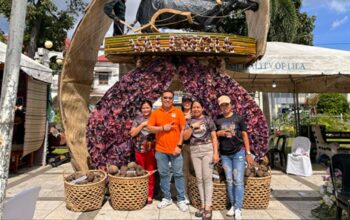THE end-users of the electric power served by Bohol Electric Cooperative (BOHECO) II cry foul over the escalating electric rates imposed on them, frequent brownouts and low and high voltage, according to Buenavista Mayor Atty. Dave Duallo.
“While residents served by BOHECO I seem to enjoy more stable electricity supply and reasonable billing practices, those under BOHECO II are facing escalating costs and unreliable services. This situation not only affects household budgets but also impacts local businesses an overall community morale,” the mayor said in his letter dated September 13, 2024 to the governor.
He added that, “Our constituents have expressed frustrations regarding he noticeable disparity between the services provided by BOHECO II and those experienced by BOHECO I consumers.”
Duallo, in an open letter, has requested Gov. Aris Aumentado and officials of BOHECO II for a dialogue to iron out kinks on frequent brownouts, low voltage and power rate increase.
The BOHECOs have increased last month the power rates separately and collects them from their respective area of coverage.
Bohol Electric Cooperative I and II raised their power rates “due to higher cost of electricity purchased from Wholesale Electricity Spot Market (WESM),” according to their respective announcements in the social media.
BOHECO I raises the residential power rates to P11.43/kilowatthour effective in August from P8.47/kwh in July, or a difference of P2.96/kwh.
BOHECO II, on the same vein, imposes higher than BOHECO I with P13.96/kwh in August, higher than July’s P10.26, or a difference of P3.70/kwh.
It was not immediately known why the BOHECOs have no uniform power rates imposed on its end-users.
The high rates of the so-called generation rate, transmission rate, systems loss and value-added tax (VAT), which are all considered as monthly variables, are described as “pass-through charges” against the consumers, BOHECO II said in its information to its clientele.
BOHECO II explained that the distribution, supply and metering (DSM) charges amounting to a total of P1.93/kwh is being used for expenses in administrative, operation and maintenance.
DSM is a fixed rate and it could not just be increased without the imprimatur of the Energy Regulatory Commission (ERC), it said.
BOHECO I expounds the following breakdown “to know where your hard-earned money goes:”
POWER GENERATION (₱7.0068): This goes directly to our power suppliers (CEDC, EDC, WESM, Net Metering) for a stable supply of electricity.
TRANSMISSION (₱0.6615): This pays the National Grid Corporation of the Philippines (NGCP) for delivering power from power plants to our substations.
SYSTEM LOSS (₱0.4919): This covers unavoidable energy loss during transmission, also paid to power suppliers.
DISTRIBUTION, SUPPLY AND DSM CHARGES (₱1.6109): These charges are the only that go directly to BOHECO I to ensure operational efficiency in providing power to your homes, businesses and essential services.
REINVESTMENT FUND FOR SUSTAINABLE CAPEX (RFSC) (₱0.5232): Although collected by BOHECO I, it is used to invest in critical infrastructure projects like substations that benefit our community’s long-term power reliability and stability.
Both DSM and RFSC charges are regulated by the ERC, which means that BOHECO I cannot adjust them without the ERC approval.
TAXES (₱0.7742): This is the Value Added Tax (VAT) that goes directly to the government.
REGULATED CHARGES AND SUBSIDIES (₱0.3092): These cover payments to government entities like PSALM and TransCo, as well as subsidies for qualified Lifeline Consumers and Senior Citizens.
The province of Bohol served by three distribution utilities—- BOHECO I and II and Bohol Light Company, Inc in the city —- has been at the receiving end when unscheduled and scheduled brownouts take place and mainly dependent on the power supply from geothermal in Leyte. (rvo)


